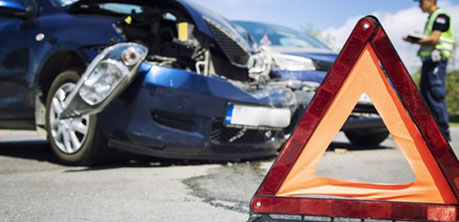Safety at Roadside Emergencies is Non-Negotiable
*By William D. Hayes, MBA, EFO
Is the Scene Safe?
It’s no secret that working roadside emergencies is one of the most dangerous situations that emergency responders can find themselves in. In 2022, the Emergency Responder Safety Institute (ERSI) cited 11 fire/EMS personnel who lost their lives in these dangerous situations, up from 9 in 2021. While that may seem like a low number in overall responses, this does not consider injuries and near misses, which are in the hundreds every year.

We can speculate that distracted driving, lower police presence resulting in higher speeds and reckless driving habits, and growing reliance on self-driving vehicles, may have influence, the fact is that the numbers of these incidents are increasing, thus your exposure to this threat. There are several things that emergency responder personnel can do to limit exposure. While this blog is short and only meant to raise continued awareness, I would encourage you to visit www.respondersafety.com for more information and training.
Standard Operating Policies and Standard Operating Guidelines (SOP/SOG’s)
It is important for organizations at every level, whether air or ground, public or private, to have guidelines and policies for operations at emergency scenes. These documents should provide a roadmap per se of what actions and measures are expected before, during, and after the response. These must be clear and concise, descriptive, trained on, and enforced.
Training
With the evolution of the Internet, there is an abundance of training videos, programs, and certifications that emergency responders can benefit from. However, training should also go far beyond self-education and include multiple agencies participating. Roadside emergencies are diverse just like the territories they occur in. While some jurisdictions may include fire, EMS, and law enforcement under one locality, in most cases, there are multiple agencies responding. Private or third-party EMS, career of volunteer fire departments, and a variety of state and local law enforcement can complicate the situation regardless of if SOP/SOG’s are in place for one agency. Roadway safety is especially important for new recruits and volunteers but should also be reinforced regularly for all first responders.
Communication
It is important at every roadside emergency for there to be clear and consistent communication. The incident commander has the responsibility to maintain control and communication over the incident. EMS personnel may be engaged in patient care, fire/rescue may be focused on danger mitigation, and law enforcement may be engaged in interviews, investigations, and gathering information. So, who’s watching for traffic?
Advance Warning and Positioning
Even when there may be sufficient personnel for watching your back, advance traffic warnings such as visual flares, cones, signs, and positioning and blocking of emergency apparatus are critical in protecting responders and the patients. Visuals should be deployed well in advance to motorists. However, we need more. Get out of the zone if possible!
Personnel Protective Equipment (PPE)
Donning your PPE at every roadside event should be non-negotiable. Again, SOP/SOG’s should guide this practice by making it a habit, or as some call, unconscious competence. High visibility markings on your PPE, as well as the apparatus, make it easier for other drivers to see you and also helps reduce the risk.
Public Education
Partnering quarterly with local media outlets and other responder agencies to help raise awareness of the dangers to both responders and victims is imperative. There are plenty of resources and sample campaigns that can be utilized with ease.
And finally…
Don’t be a part of the problem –
A negative safety culture will often arise out of the normalization of deviance, or in other words, doing the wrong thing enough becomes the right thing. There is no margin of error when it comes to roadside emergencies. In the least little moment, complacency can prove deadly. Just because it hasn’t happened yet to you or your organization, there is always a time and place.
All the aforementioned items I listed are only samples of things you and your organization(s) can do to reduce the risk. Planning ahead with your department on training exercises, reinforcing relationships with law enforcement, reviewing equipment, and encouraging quicker removal times are practices to incorporate. I would encourage you to become engaged, read the reports and white papers, and watch the safety videos because I can promise you somewhere you will find an incident or situation that you found yourself in that may not have gone badly for you but has for someone else.
Be safe out there.
*Billy D. Hayes is a Territory Sales Manager for Quick Med Claims. He has over thirty years associated with fire and emergency services where he has held a variety of positions including Paramedic, Fire Marshal, and Fire Chief. Billy is a graduate of the Executive Fire Officer Program, and has an MBA, and a certificate in local government management.